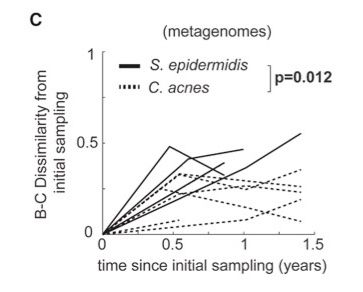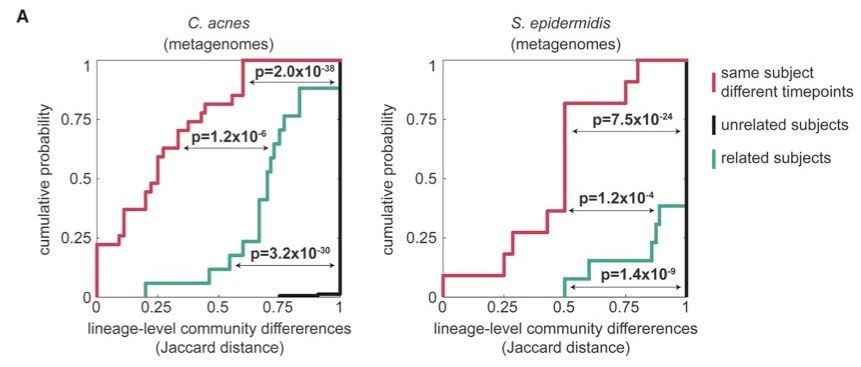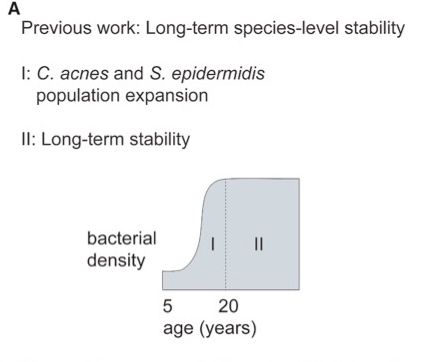
Still thinking about the 10^9 mutations generated in your microbiome today.
Website: http://lieberman.science

The symposium will unite infectious disease researchers, clinicians, and AI experts to discuss how AI can help address the most pressing challenges in infectious diseases.

The symposium will unite infectious disease researchers, clinicians, and AI experts to discuss how AI can help address the most pressing challenges in infectious diseases.
Tried to give Powerpoint's AI 'copilot' a spin. Asked it to make me a slide with 100 circle shape objects randomly distributed. Was excited when it made me a pptx to download...
except this is what it came up with.
Why can't we have nice things?



Tried to give Powerpoint's AI 'copilot' a spin. Asked it to make me a slide with 100 circle shape objects randomly distributed. Was excited when it made me a pptx to download...
except this is what it came up with.
Why can't we have nice things?
Surprisingly, phage-sensitive C. acnes subphylogroups dominate across the globe.
This is true even in samples with high virus-to-microbe ratios.

Surprisingly, phage-sensitive C. acnes subphylogroups dominate across the globe.
This is true even in samples with high virus-to-microbe ratios.



The deadline for both short talks and scholarships is TOMORROW September 23rd!!
www.keystonesymposia.org/conferences/...

The deadline for both short talks and scholarships is TOMORROW September 23rd!!
www.keystonesymposia.org/conferences/...

Left is bioA trace, and right is fragment size calculated from either read output (blue) or transformation of BioA trace (black).
Fig 3 from journals.plos.org/plosone/arti...

Left is bioA trace, and right is fragment size calculated from either read output (blue) or transformation of BioA trace (black).
Fig 3 from journals.plos.org/plosone/arti...







Strikingly, the lowest intralineage diversity is found on children at the transition to adult-like microbiome, suggesting accelerated colonization of new strains at this time.
[8/10]


Strikingly, the lowest intralineage diversity is found on children at the transition to adult-like microbiome, suggesting accelerated colonization of new strains at this time.
[8/10]
We can see this from both timeseries data and from looking at intralineage mutation accumulation (measured by dMRCA, which is then converted to time -- tMRCA).
[7/10]


We can see this from both timeseries data and from looking at intralineage mutation accumulation (measured by dMRCA, which is then converted to time -- tMRCA).
[7/10]
In these diagrams, each lineage is represented as the area between two lines, colored by whether it was acquired in early life, late childhood, or adulthood.
For more on how we infer these dynamics, read on.
[6/10]


In these diagrams, each lineage is represented as the area between two lines, colored by whether it was acquired in early life, late childhood, or adulthood.
For more on how we infer these dynamics, read on.
[6/10]
-Family members share some, but not all of their lineages.
-When lineages are shared, multiple genotypes are typically transmitted, ruling out a single-cell bottleneck.
This suggests limited transmission despite ample opportunity. [5/10]


-Family members share some, but not all of their lineages.
-When lineages are shared, multiple genotypes are typically transmitted, ruling out a single-cell bottleneck.
This suggests limited transmission despite ample opportunity. [5/10]
As expected, each person has many lineages of both species.
[4/10]

As expected, each person has many lineages of both species.
[4/10]
We used culture-based sequencing (~96 colonies/sample!) and metagenomics to study strain dynamics of 2 species.
These two species, C. acnes and S. epidermidis, comprise ~80% of adult facial skin microbiomes.
[3/10]

We used culture-based sequencing (~96 colonies/sample!) and metagenomics to study strain dynamics of 2 species.
These two species, C. acnes and S. epidermidis, comprise ~80% of adult facial skin microbiomes.
[3/10]
Interestingly, the facial skin is undergoes an oil-driven expansion during adolescence, which might enhance strain migration. [2/10]


Interestingly, the facial skin is undergoes an oil-driven expansion during adolescence, which might enhance strain migration. [2/10]
How many cells transmit when a strain is shared?
Can strain composition be dynamic when species composition is stable?
We answer these and related questions for the facial skin microbiome in our latest paper.
🧵[1/10]

How many cells transmit when a strain is shared?
Can strain composition be dynamic when species composition is stable?
We answer these and related questions for the facial skin microbiome in our latest paper.
🧵[1/10]



